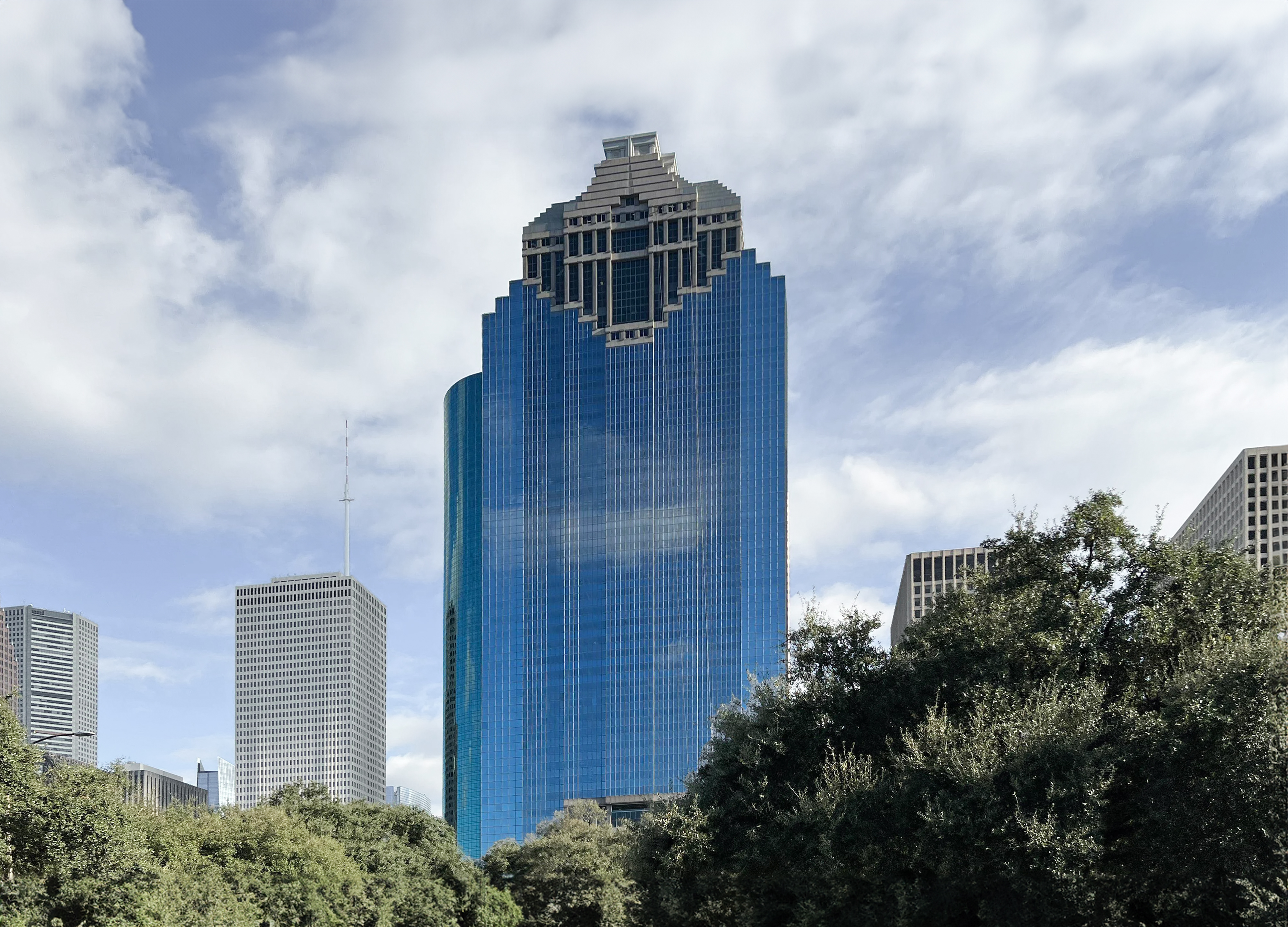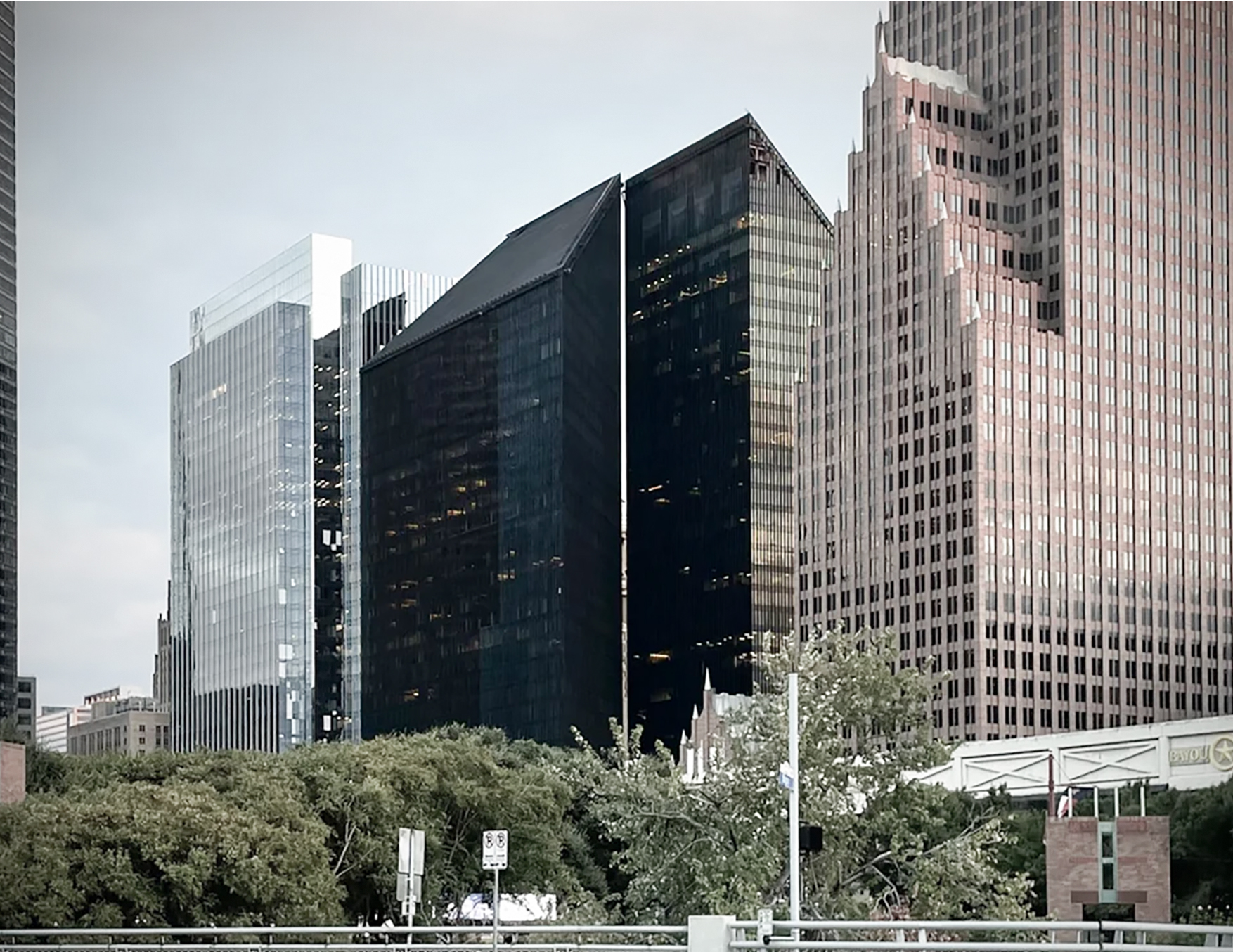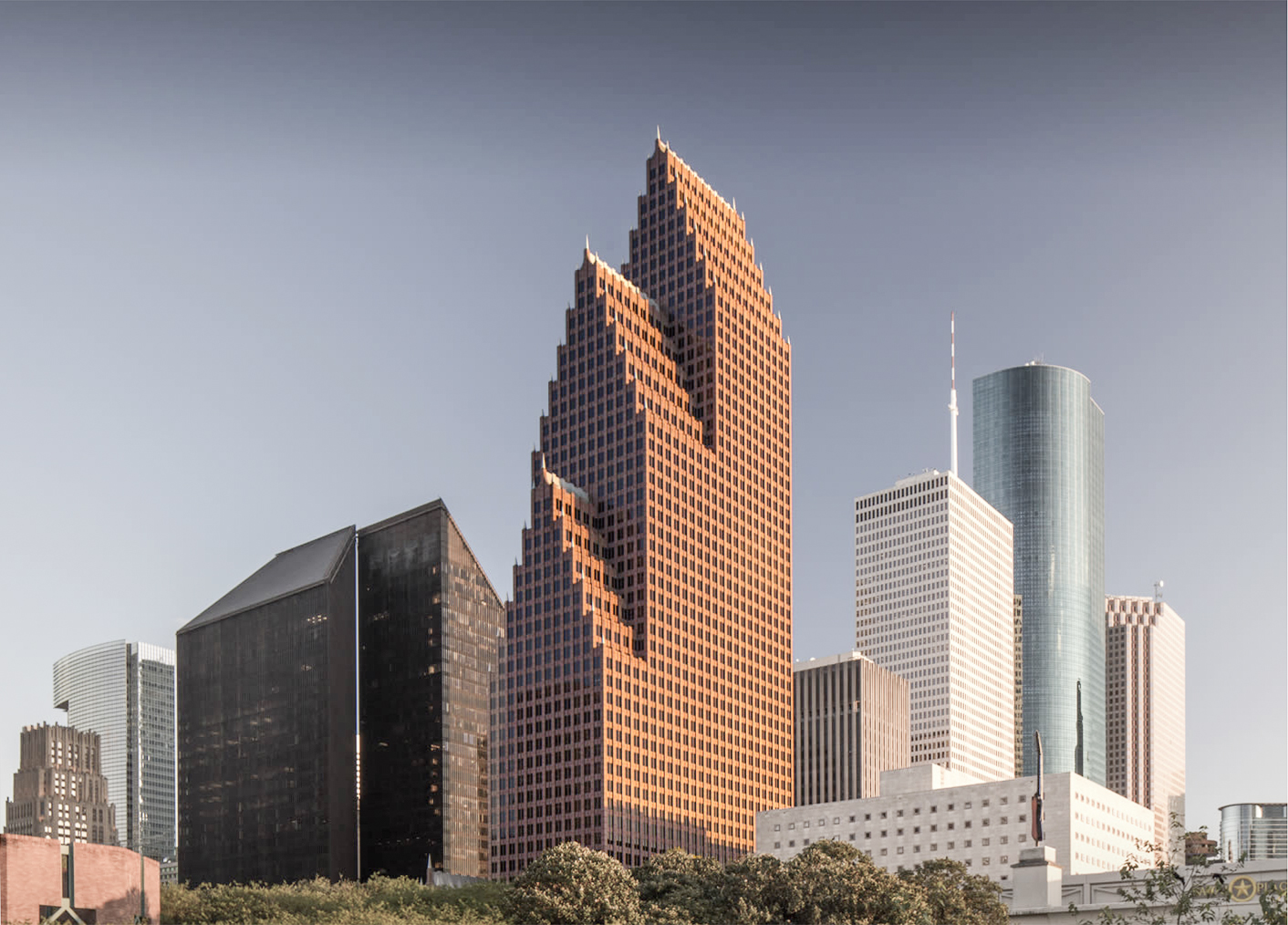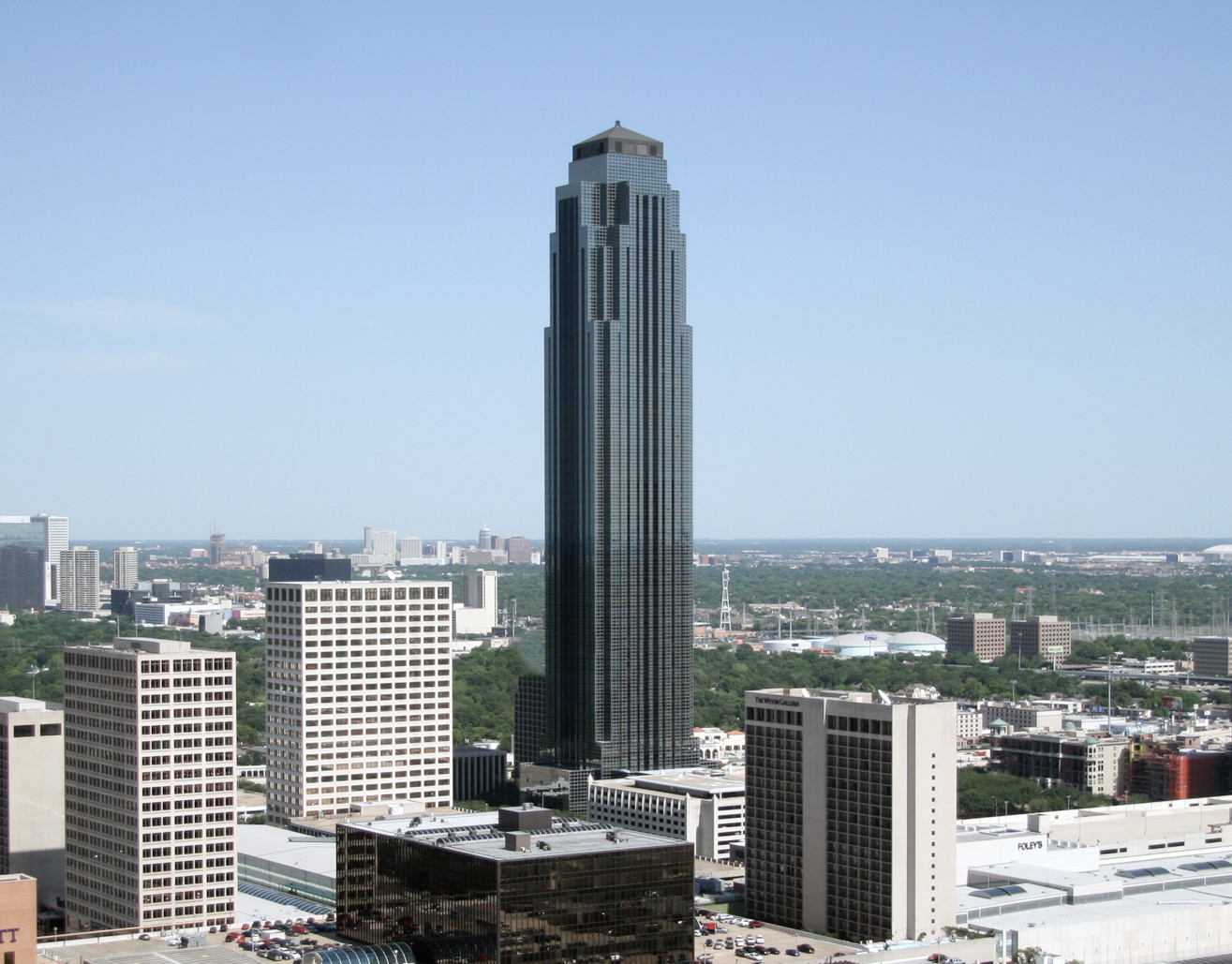The Heritage Plaza is a Postmodernist skyscraper designed by M. Nasr & Partners, and built between 1984 and 1987 in Houston, TX.
Heritage Plaza is not the only name you might know this building by though. It is common for companies to want to attach their names to iconic buildings when they move in, or for the general public to come up with nicknames, and this one is no exception. The Heritage Plaza is also known, or has been known as, Texaco Heritage Plaza, or Chevron Texaco Heritage Plaza.
Its precise street address is 1111 Bagby Street, Houston, TX. You can also find it on the map here.
The Heritage Plaza has received multiple architecture awards for its architectural design since 1987. The following is a list of such prizes and awards:
- Landmark Awards in 2009
- APEX Award in 2022
The building underwent a major restoration between 2019 and 2021. The architect commissioned to undertake this restoration was Kirksey Architecture.





